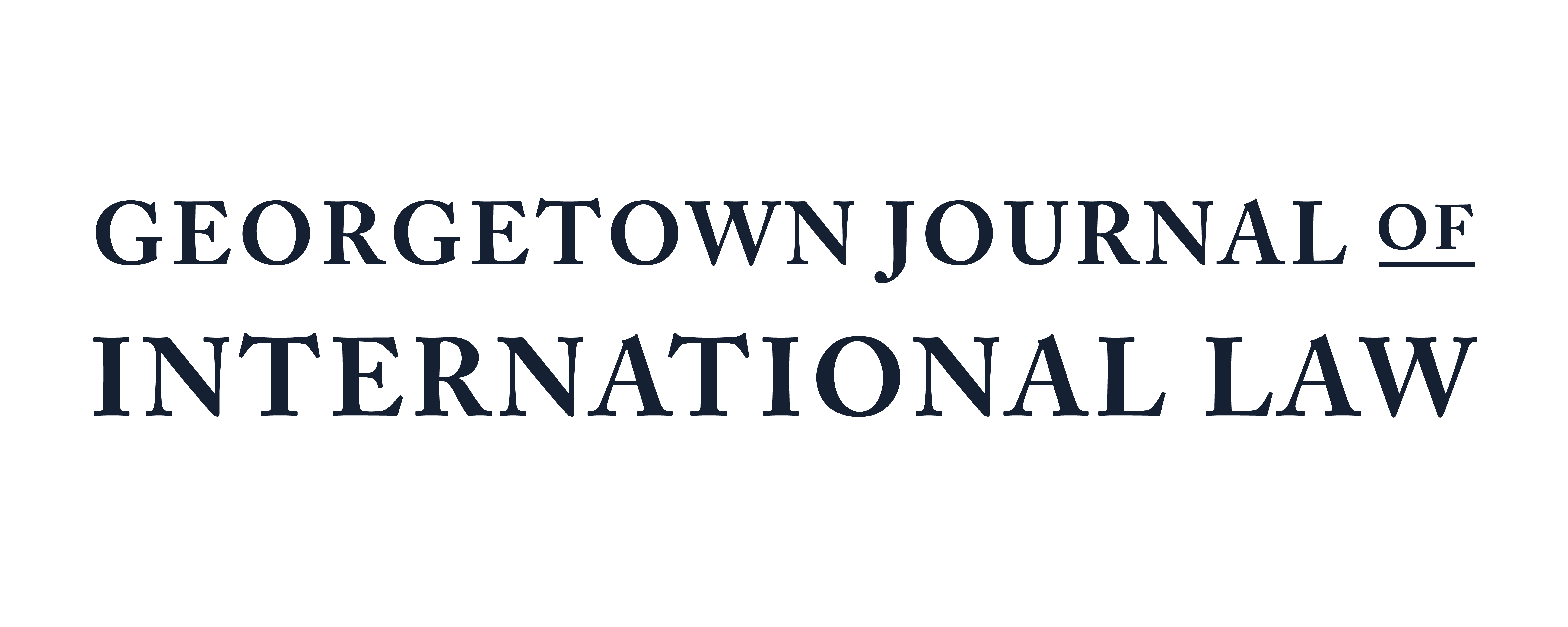GJIL-HILJ Collaboration
GJIL and Georgetown Law’s Center on Inclusive Trade and Development collaborated with the Harvard International Law Journal (HILJ) to publish short-form scholarship at the intersection of emerging technologies, climate change, and international law. Other pieces in the contribution are available on the HILJ page.
By John Rider
October 21, 2024
One of the most well-interrogated features of colonialism has been the extraction of value from lands by persons other than those who live in those lands, and the refusal to share that extracted value with the persons whose lands are made unlivable by the processes that accompany value extraction. This process persists into the present; indigenous populations are routinely displaced by those who want to access the mineral wealth under their territories. New social technologies like the carbon credit have now made it possible to extract new value from land, through the calculated addition and maintenance of carbon-sinks, like forest biomass, rather than through the physical removal of mineral wealth.
Unfortunately, this new mode of utility-extraction may be perpetrating the same violence of displacement: the Ogiek, an indigenous minority group in Kenya, have been repeatedly evicted by the Kenyan government so as to turn their ancestral land into forest reserves, while the Kenyan government has vociferously proclaimed their intent to go all-in on the new carbon economy. In what way does this new resource economy reiterate the violences of the resource economy that preceded it? And given that the Ogiek and other regional indigenous groups understand themselves to have been the stewards whose action maintained these forestlands, and given that their removal may result in more destruction of forestlands (which would thereby actually reduce those lands’ sequestering capacity), in what way might these acts of removal frustrate or obviate their ostensible ends?
By Zuzanna Buszman, Lena Kannenberg, and Emma Bursztejn
June 7, 2024
This piece reflects on the implementation of the European Union’s (EU) Green Deal Industrial Plan concerning hydrogen production and its implications for competition policy. A comparison is drawn between the United States’ (U.S.) recently adopted Bipartisan Infrastructure Law (BIL) and Inflation Reduction Act (IRA), emphasizing the differences in their approaches, specifically with regard to the selectivity of aid measures. While the U.S. follows a non-selective approach, offering tax benefits to any company willing to produce in the United States, the EU promotes hydrogen production under the Important Project of Common European Interest program (IPCEI), an exceptionally massive transnational state subsidy program. The selectivity inherent in the IPCEI program could raise competition issues within the EU Single Market, thereby creating a less innovative and growing market than the U.S. one. By exploring in detail, the EU’s new selective approach and contrasting it with the U.S.’s non-selective approach, this paper aims to provide insights into the transatlantic policy divergence and its implications for the global climate and green energy agenda.
By Juliana Ganendra
June 7, 2024
International standards play an important role in assessing the WTO compatibility of national technical regulations. This piece will focus on the International Organization for Standardization’s (ISO) standards because it is the largest international standard-setting organization. It will argue that the ISO has been important in addressing the climate emergency by establishing credible international environmental standards and including developing countries in the dialogue for developing technical regulations. However, the ISO needs to introduce more ambitious environmental standards to help states meet their Paris commitments and address the climate emergency.
Proceedings of Conference: Nuclear Weapons and International Law: Renewed Imperative in Light of the Russian Invasion of Ukraine
Volume 55 of the Georgetown Journal of International Law is pleased to publish the proceedings of the conference, “Nuclear Weapons and International Law: The Renewed Imperative in Light of the Ukraine War.”
This conference addressed the continuing and heightened dangers of nuclear war accentuated by Russia’s invasion of Ukraine and threats to use nuclear weapons. It featured knowledgeable speakers with a wide range of experience in government, the military, NGOs, academia, and think tanks. Click here to access the materials from the conference.

